Ilocos Norte is indeed a cradle of great leaders, talented artisans and genuine inventors. It is really evident in the multitude of achievements that spread not only in the Philippines but also in the whole world. These are some of the products that we Ilocanos should take pride with. Pasingkedan ti kina Tan-ok ni Ilocano.
Huwebes, Agosto 29, 2013
Huwebes, Agosto 22, 2013
Binakol

Binakol is a textile found originally in Sarrat. It is a fabric with geometric patterns using dark blue and white cotton threads accented with yarn with bright colors. Guests fell in love with the textile and they bought their own binakol products such as bags, hats, coin purses and many others. Just like the Abel of Paoay, it is also made up of cotton from the Kapas Sanglay Tree.

Binakol Blankets
Gastronomic hits of Saniata

From the cactus family, specifically the genus Hylocereus or dragonfruit is football-shaped and has a leathery, leafy skin that is deep red or pink in color. It comes in three varieties, red flesh, white flesh and yellow flesh, all of which are embedded with hundreds of black seeds and have a mild, sweet taste. The best-tasting variety is the one with red flesh, which is succulent when eaten.
Dragon Fruit is indeed a dragon in the fruit kingdom. Because of it's very versatile characteristics, and of course the innovative attitudes of the Ilocanos, they came to discover many mouth-watery products that can give an exquisite savor and aroma. And of course because of the health benefits it can give.
:) These are the products that made up of Dragon Fruit :)
| Dragon Fruit Shake |
 |
| Dragon Fruit Salad |
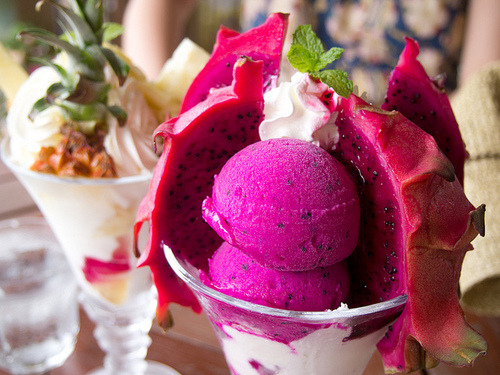 |
| Dragon Fruit Ice Cream |
| Dragon Fruit Bread |
 |
| Dragon Fruit Juice |
 |
| Dragon Fruit Cake |
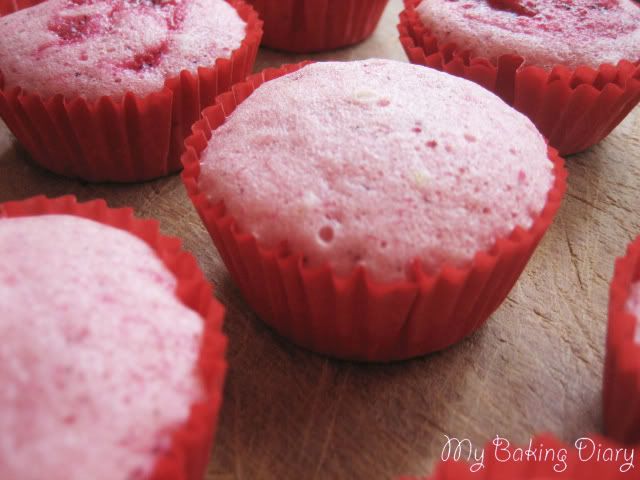 |
| Dragon Fruit Cupcake |
Dulang :)

Giant Sunshine Sinuman
OTHER PRODUCTS OF MALUNGGAY

Malunggay Dudol

Malunggay Cookies

Malunggay Empanada

Malunggay Tinudok
Intayon Makilubilubi! :)

Aglubilubi is part of the tradition of the Ilocanos where a group of teens or adults converge to do lubilubi. They take with them new friends and introduce to the group. They do lubilubi as a bonding session. Each participant shall bring his or her contribution for thelubilubi such as the ingredients for it. One may bring boiled bananas, condensed milk, grated coconut, margarine and sugar. Of course, it won’t be complete without the alsong and al-o or mortar and pestle to pound the ingredients.
Lubi-Lubi Products


Lubi-lubi products ranged from various ingredients. There is mongo seeds with glutinous rice and grated coconuts and were pounded together. Cassava or balanghoy, ube, sweet potato, rimas, taro, togue and others can be used as a base ingredient.
Martes, Agosto 20, 2013
Suman Procedure
Banana Leaves Ingredients
1 c. of glutinous (sticky) rice, soaked in cold water for at least six hours1 c. of coconut milk, fresh (see how to extract coconut milk) or canneda generous pinch of saltbanana leaves
Instructions

Strain the rice. Cook in coconut milk with salt. I used a rice cooker and it did the job wonderfully. Cool the rice.Meanwhile, prepare the banana leaves.
Rinse the banana leaves. Wipe dry.
Pass every part of the leaves over an open flame to soften and wilt. Unless you do this, the banana leaves will break when you wrap the rice with it.
Cut the banana leaves so that you have 8 to 10 pieces that are about 8″x8″ square and another set of 8 to 10 pieces that are about 12″x12″ square.

Place an 8″x8″ piece of banana leaf on top of a 12″x12″ piece. Place two to three tablespoonfuls of cooked rice at the center.

Wrap the rice with the smaller piece of banana leaf, as tightly as you can, and folding the sides neatly. Use the larger piece of banana leaf to wrap the parcel. The double wrapping seals the rice well and serves as an insurance that in case the first wrapping tears, there is another layer to protect the precious rice inside.
Repeat until all the rice has been wrapped.

Stack the parcels, seam side down, in a steamer basket. Steam over boiling water for about 45 minutes.

Cool the suman for about 15 minutes before unwrapping to give it a chance to firm up. Top with grated fresh coconut and sugar, and enjoy!
Panagdapil

Before modern versions of the sugar mill were introduced, the dadapilan was the only machine used to extract the sweet juice from the sugarcane stalks. In a cool outdoor setting, the dadapilanmade from sagat tree, composed of two huge cylindrical parts designed to extract the juice from the sugarcane stalks was a common scene in the farms. This machine is powered by a blindfolded carabao or cow hitched to the end of a log attached to the mill. As the carabao walks in circle around the mill, the juice is squeezed from the stalks fed into the mill. This sucrose called bennal is collected in a container called silyasi. The bennal is boiled in a huge vat called sinublan and is used to produce molasses of different types, basi (wine), or vinegar. The refined molasses become sugar which is the most commercialized product from sugarcane. All these sugarcane products are means of livelihood for the farmers and their families.
Panagdapil is an arduous task but it is not all sweat and hard work. After the dapil is completed, it is party time for the neighbors, young and old. Some delightful snacks made from banana shoots, papaya strips, young coconut strips candied in the bennal calledkalti are served with other sweet delicacies. It is merrymaking time where the farmers may even drink to a toast of basi, as sweet smell hangs in the air.
Kurti (Tannery)



San Nicolas, Ilocos Norte, a town of proverbially industrious Ilocanos, is known as a center of pottery, although there were other cottage industries including leather tanning which was once a major industry producing leather crafted goods. The tanneries were situated in the outskirts of the town where there were wide open spaces for sun drying and to keep the foul odor emanated during the tanning process away from the populated areas.The main source of leather, locally called LALAT, is the rawhide which is the by-product of the meat industry – mostly cow, carabaos and horses. Skins of small animals such as goats, cats, monkeys, lizards, and snakes are also sources of good leather. Leather is crafted into various articles such as footwear, belts, luggage, upholstery, and many more.
Leather tanning is a simple process but requires patience and endurance. After the rawhide is stripped from the butchered animal, it is thoroughly washed and prepared for tanning. It is heavily sprinkled with lime and soaked in lime and water solution for two weeks. Then it is drained and soaked in a solution of extracts from the bark of the DAMORTIS tree (Pithecellobium dulce) and water of two weeks. It will be flipped over and kneaded continuously to get it evenly saturated. This will give it the reddish color. When this is completed the hide is stretched flat and staked to the ground and left to dry. The tanned leather is then ready for market.
Panagpanday (Blacksmithing)
The people of Ilocos Norte are very well familiar with the products of the Panagpanday industry as they are predominantly utilized all year round by the farmers of the province. However, so little has been told or portrayed in the public about the processes involved in making the simple kumpay to the more intricate arado. The basic processes involved in the production of the different pinanday products beginning with the rigorous road-to-road calling to buy scrap metals called landok, to winnowing and lighting up the coal called agyubuyob, hammering the heated metal or panagpitpit, simultaneous with panagsebseb using damped tiger weeds tied up to a stick of wood, to finishing the product with the use of carabao horn.
PAMULINAWEN, pusok indengam man!
PAMULINAWEN, that's what they call the festival of Laoag City
Pamulinawen had been a beautiful stone, “Dalumpinas” by the name, which had been oval in its form, as the size of a human heart. It had been solid, smooth and unbreakable, compared by a LOVER to a beautiful lady possessing a good and sterling character, that had never been engaged, never been loved, never been kissed and never been disgraced.
Pamulinawen is popularized by the Philippine Constabulary Band, conducted by Col. Loving and asserted by Capt. Pedro B. Navarro in the Panama Exposition held in the US in 1915. The lyrics of the immortal song were written by Isidro Castro and set to music by Julian Dacuycuy Sales. Navarro, Castro and Sales were all Bacarreños.
Truly, not only in material products Ylocanos are good at, they are also creative in terms of Dances and Song. Watch this video and you'll know why it's worth watching for.
Lunes, Agosto 19, 2013
Basi (Ilocano Fermented Wine)
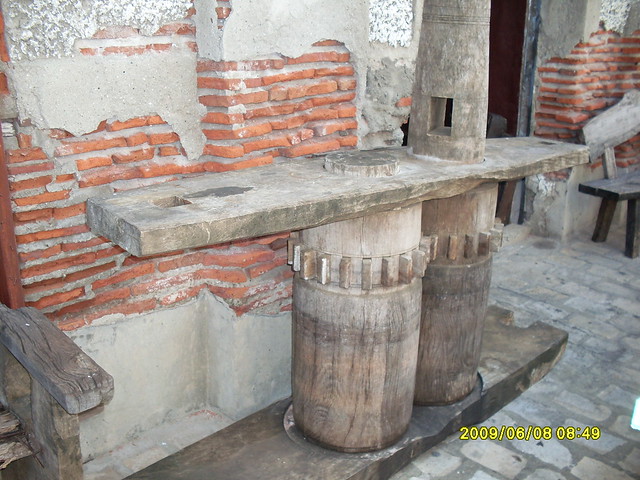

Basi is the local beverage of the Ilocanos. The basi is produced by first crushing sugarcane and extracting the juice. The juice is boiled in vats and then stored in earthen jars. Once the juice has cooled, flavorings made of ground glutinous rice and duhat (java plum) bark or other fruits or barks is added. The jars are then sealed with banana leaves and allowed to ferment for several years. The resulting drink is pale red in color. If fermented longer, it turns into suka or vinegar. This is a favorite beverage among townsfolk during celebrations and gatherings.
Abel Iloco


History records that cotton-loom woven textiles called inabel were rooted traditions at the time the Spanish colonized Ilocos Norte in 1572. China, Japan and Southeast Asia were already trading their gold, ceramics, jars, iron and beads with inabel in the natural harbors along the coasts. The Spaniards began to take interest in the inabel known for its strength and durability and endorsed it as excellent sails for galleons in the same way it was utilized locally in boats, barangays and other sea-going vessels. For centuries inabel has also been used to make blankets.
The quality pure cotton fabrics of Ilocos Norte became known far and wide and the demand for the raw and spun cotton as well as textile products of Ilocos by European, Chinese, Japanese and Indian traders, intensified. Because of its astonishing beauty the inabel has caught the attention of international couturiers who started working with Ilocano weavers in developing new designs. Its versatility is limited only to the imagination as local weavers continue developing new designs and techniques.
Traditional Steps of Weaving
1. Pinagbukag ti kapas – picking of cotton balls.
2. Panagladdit ti kapas – removing the seeds with the use of a cotton gin.
3. Panangbatbat ti kapas – pounding or beating with the use of the lagundi sticks.
4. Panangsunay / Panangtibbi ti kapas (Twisting) – twisting the cotton using the spindle.
5. Panagilabay ti sagot (Skeining) – winding the cotton yarn into the skeiner.
6. Panagtagud iti nailabay nga sagot (Combing) – brushing the skeined yarn to make it durable and glossy.
7. Panagpulipol ti sagot (Spooling) –winding the skeined yarn to the bamboo spool.
8. Panaggan-ay ti sagot (Warping) – winding the spool yarn into the warping reel or tool for warping.
9. Pananglukot ti sagot (Beaming) – winding the warp yarn into the warp beam rod.
10. Pinagisubo iti Gur-on (Heddling) – inserting the warp yarn through the heddle eye with the use of the weaver’s hook.
11. Pinagisubo iti Sugod (Sleying) – inserting the warp yarn through the dents or spaces of the reed with the use of the weaver’s hook.
12. Pinagipakat diay Pagablan (Tie-up / tying- in) – dressing the loom to tie the heddles behind the beater.
13. Agabel (Weaving) – the interlocking of vertical yarn (warp) known as gan-ay and the horizontal yarns (weft) as pakan.
Agdamdamili kami


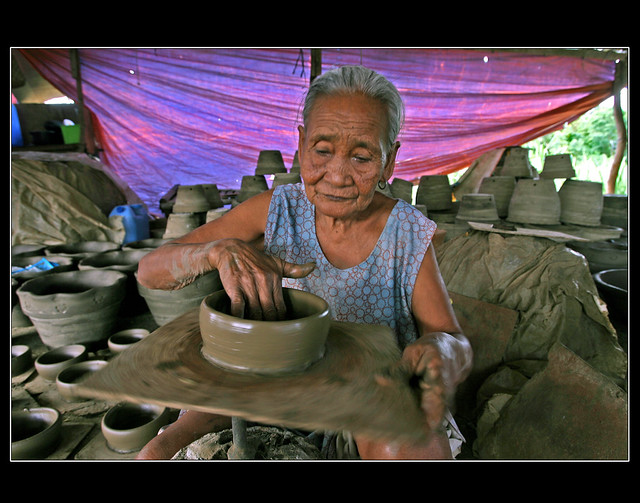
Empanada! Empanada!
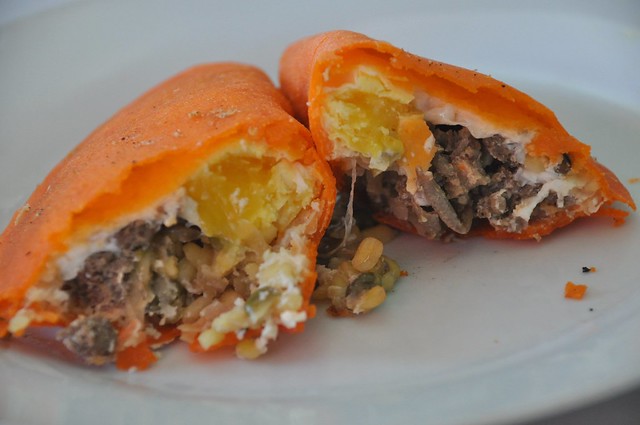

Think of it as the best treat for anyone as hungry as a wolf and for anyone as meek as kitten. Batac empanada caters to the taste of everyone.
Although popular fast-food chains were introduced recently, more people opt to settle for empanada. Aside from being more affordable, it also offers one square meal. It's crust is made up of an orange flour called bella-ay, while it's fillings are grated papayas, mongos, chopped ilocano longganisas, and egg. It is deep fried. Famous makers of empanadas are Batacenos.
Bagnet

The Ilocanos are very creative when you talk about cuisine. One of the very mouth-watery dishes of the Ilocanos is the Bagnet, or is locally known in the Katagalugan as Chicharon, a deep-fried pork meat. It's aroma makes you indulged and makes you addicted to it, of course with it's condiments, the kamatis and bagoong. The eating of it's crispy skin is really the climax of eating Bagnet. The crispier the skin, the harder you resist.
Mag-subscribe sa:
Mga Post (Atom)






